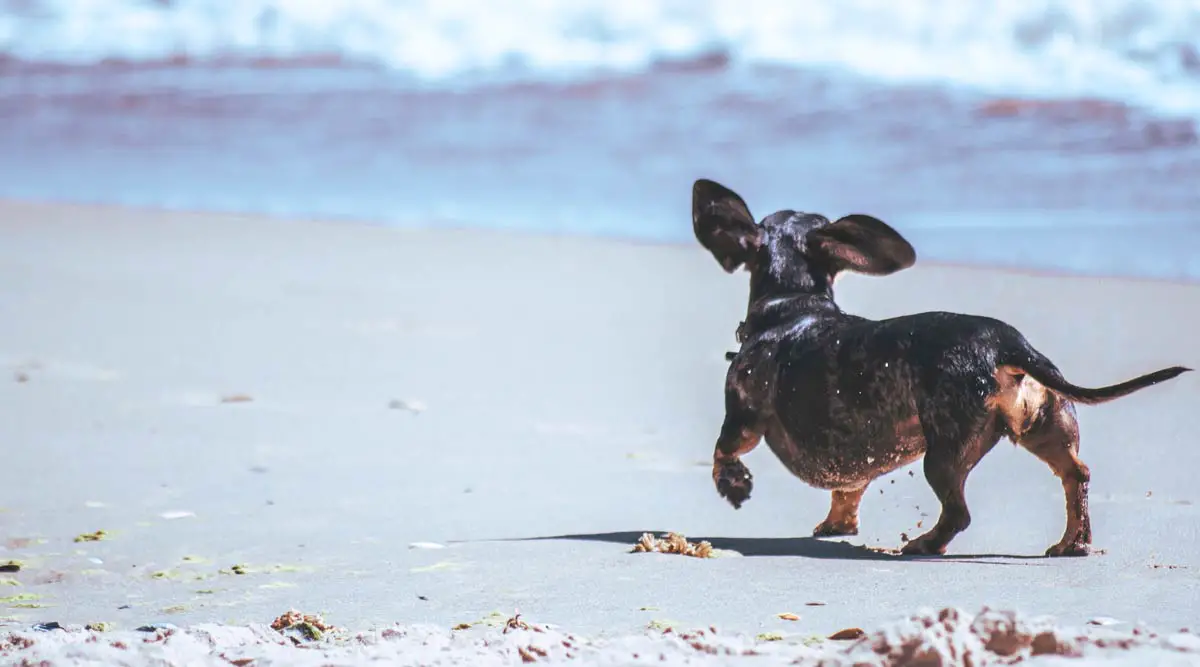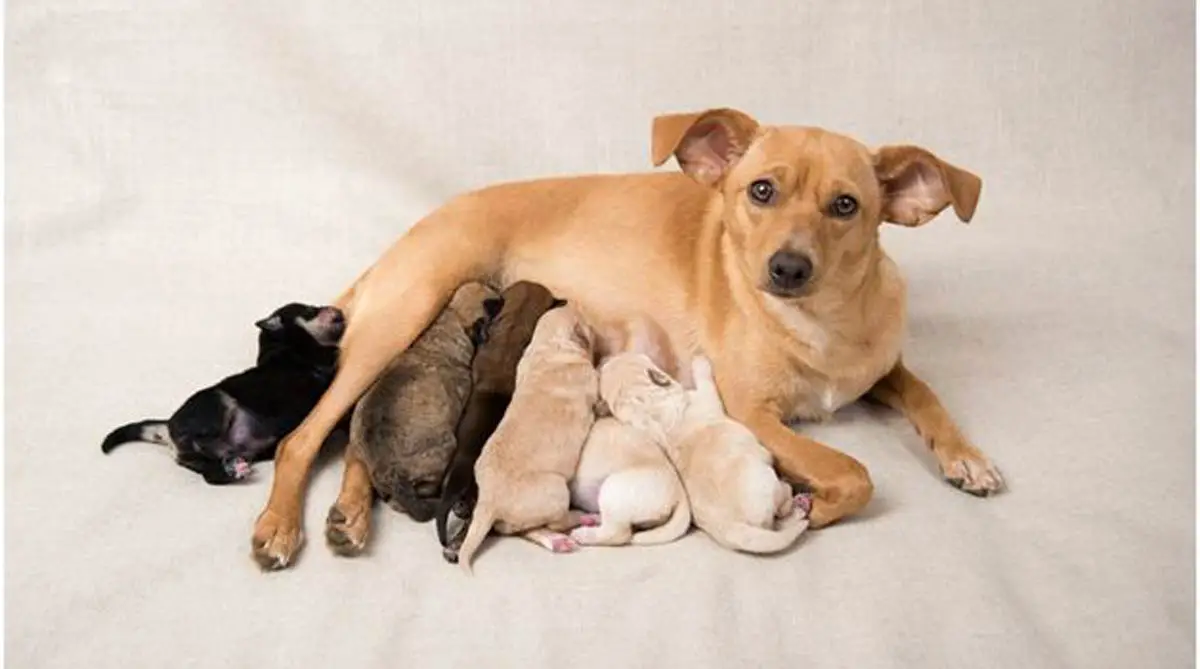A dog pregnancy is an exciting time for dog owners.
It is essential to understand the signs, stages, and proper care during this period to ensure the health and well-being of the mother and her puppies.
In this article, we will explore the key aspects of dog pregnancy, including the signs of pregnancy, the stages of pregnancy, and the necessary care that should be provided.
1. Signs of Pregnancy
1.1 Behavioral Signs
- Increased affection: pregnant dogs may become more affectionate towards their owners or other animals in the household. They seek more attention and enjoy being close to their human companions.
- Changes in appetite: some dogs may experience a decrease in appetite during the early stages, while others may show an increased hunger. Keep an eye on your dog’s eating habits and note any significant changes.
- Nesting behavior: pregnant dogs may exhibit nesting behavior, where they start to create a comfortable and secure space for their upcoming puppies. They may gather blankets, towels, or other soft materials to build a nest-like area.
- Restlessness: your dog may have difficulty settling down and may seem agitated or restless at times.
1.2 Physical Signs
- Nipple enlargement and color change: a pregnant dog’s nipples will enlarge and may darken in color. This is due to the hormonal changes occurring in her body in preparation for nursing the puppies.
- Abdominal enlargement: as the pregnancy advances, you will notice a gradual enlargement of the abdomen. The belly becomes rounder and more prominent as the puppies grow inside.
- Weight gain: a pregnant dog will gradually gain weight as the pregnancy progresses.
However, it’s important to note that weight gain alone is not a definitive sign of pregnancy, as other factors like overfeeding or certain health conditions can also lead to weight gain. - Changes in vulva: the vulva of a pregnant dog may appear slightly swollen or protruded compared to its normal state. This change is caused by increased blood flow to the reproductive organs.
Remember, these signs are not definitive proof of pregnancy, and a veterinary examination is essential for confirmation.
A veterinarian can perform hormone tests, palpation, X-ray, or ultrasound, to determine if your dog is pregnant accurately.

2. How Long Are Cats Pregnant For?
The gestation length for dogs is typically approximately 62-64 days or about two months.
This also varies with breed and litter size.
3. Pregnancy Stages
Dog pregnancy has four stages.
Understanding the different stages of dog pregnancy is essential to track the progression of the pregnancy and provide appropriate care.
3.1 Fertilization
The first stage lasts for about 22 to 27 days.
During this stage, the fertilized eggs travel to the uterus, and the embryos start to form.
3.2 Embryo Development
The second stage lasts from day 28 to day 45.
This stage is crucial as the organs, limbs, and nervous systems of the puppies develop.
Tips: at this stage, it is crucial to provide the mother with proper nutrition and a stress-free environment to support the healthy development of the embryos.
Regular veterinary check-ups are recommended to monitor the progress of the pregnancy and address any potential issues.
3.3 Fetal stage
In the stage from day 46 until birth, the puppies continue to grow and develop in the uterus.
During this stage, the mother’s abdomen will visibly enlarge as the puppies grow in size.
Continuing to provide the mother with a nutritious diet and regular veterinary check-ups will help ensure that the pregnancy is progressing well and address any concerns.
3.4 Preparing for Birth
At this point, the puppies are fully developed and preparing to enter the world.
The mother’s belly is noticeably enlarged, and her mammary glands may start producing milk in preparation for nursing the puppies.
During this stage, the mother may display nesting behavior, seeking out a comfortable and secure place to give birth.
It is important to provide a whelping box or area that is warm, clean, and easily accessible. Prepare necessary supplies such as clean towels, and heating pads, and have the contact information of a veterinarian on hand for any emergencies.
Related: How often should take your dog to the vet?

4. Pregnant Dog Care
4.1 Health
Veterinary check-up
Regular veterinary check-ups are essential during dog pregnancy.
The veterinarian will monitor the progress of the pregnancy, ensure the health of the mother, and provide any necessary vaccinations or treatments.
These check-ups help detect any potential complications early on and ensure a safe and healthy pregnancy.
Vaccinations
Before breeding, make sure the mother dog is up-to-date on her vaccinations. Vaccinations provide immunity not only to the mother cat but also to the puppies.
However, during pregnancy, it is generally recommended to avoid administering vaccines unless deemed necessary by the veterinarian.
Consult with your veterinarian regarding vaccination protocols specific to your dog’s situation.
4.2 Nutrition & Diet
- Proper Nutrition:
A pregnant dog requires a balanced and nutritious diet to support her own health and the growth of her puppies.
Consult with the veterinarian to determine the appropriate diet and feeding schedule.
The diet should include high-quality dog food that is specifically formulated for pregnant and nursing dogs. It should be rich in essential nutrients like protein, calcium, and vitamins.
Avoid giving supplements or making drastic changes to the diet without professional guidance. - Adequate Hydration:
Ensure that the pregnant dog has access to clean and fresh water at all times.
Hydration is crucial for the overall well-being of the mother and the development of the puppies.
4.3 Environmental Factors
Create a safe and comfortable space for the pregnant dog.
Provide a warm and quiet area where she can rest and nest.
Ensure that the bedding is clean and cozy.
Minimize stressors and keep the environment calm to promote a relaxed atmosphere for the mother.
Tips:
- Prepare for the upcoming birth by setting up a whelping box or area.
- The whelping box should be large enough for the mother to move around comfortably and have low sides to prevent the puppies from escaping.
- Line it with clean towels or blankets for warmth and easy cleaning.
- Keep a heating pad or heat lamp nearby to maintain a suitable temperature for the puppies.
- Gather necessary supplies such as clean towels, gloves, scissors, and a contact number for a veterinarian in case of emergencies.
4.4 Exercise and Rest
Moderate exercise is important for maintaining the mother’s overall health and muscle tone during pregnancy.
Regular walks and light play sessions can be beneficial.
However, avoid excessive exercise or activities that may put stress on her body.
Provide opportunities for rest and relaxation, as pregnant dogs may tire more easily.
Tips:
- Provide extra love, attention, and reassurance to the pregnant dog.
- Spend quality time with her, engage in gentle activities, and offer plenty of affection.

5. Preparing for Puppies
Preparing for the arrival of puppies requires careful planning and preparation.
- Setting up a comfortable and safe whelping area, assembling a whelping kit, and ensuring proper temperature and ventilation are important.
- Additionally, being prepared to assist during the birthing process, monitoring the puppies’ weight and health, and arranging for necessary veterinary care is crucial.
- Lastly, finding suitable homes for the puppies and providing early socialization and stimulation contribute to their well-being.
- Remember to consult with a veterinarian for personalized guidance throughout the process to ensure the best care for newborn puppies.
Related: Vaccinations for Puppies
6. Overview
Dog pregnancy is an exciting experience, but it requires proper care and attention.
As a pet owner, it is essential to recognize the signs of pregnancy and provide your pregnant dog with the care she needs during each stage of pregnancy.
By following these guidelines, you can ensure that your dog has a healthy and successful pregnancy.
———————————————————————————————–” “——————————————————————————————————–
Read more: Cat pregnancy: Signs, Stages and Care










